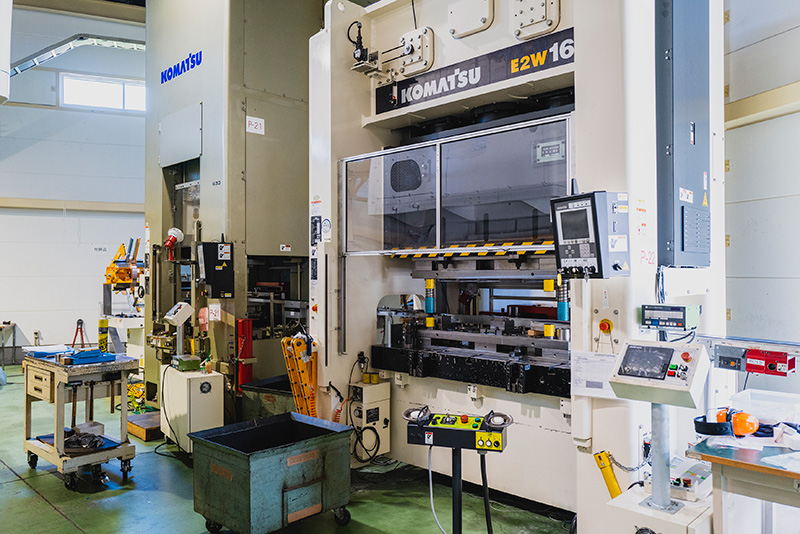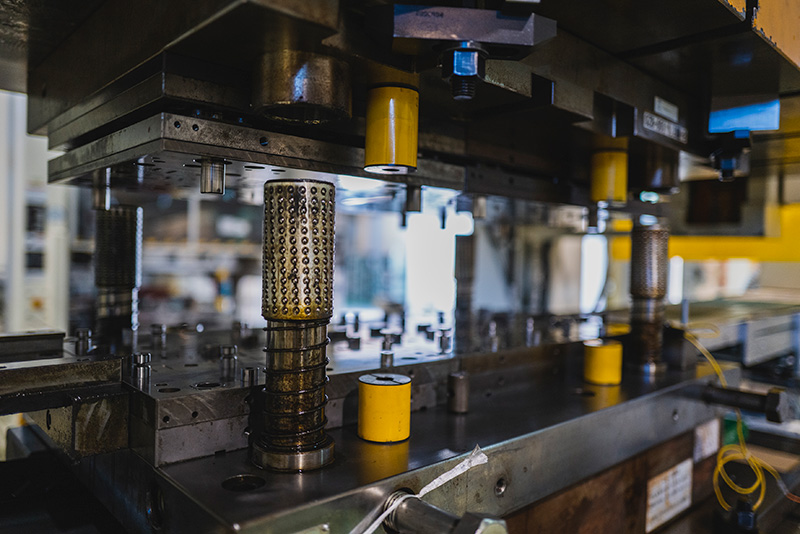In the production of products made of thick workpieces, the strongest load is applied to the press machine (die) during the material crushing process. In conventional manufacturing of thick products, the center of load of the die deviates from the center of load of the press machine, meaning that the press machine is always subjected to an unbalanced load. As a result, the slide of the press machine tilts, leading to damage die parts.
Our original manufacturing system for thick products uses different press machines for the crushing process and later cutting/bending/drawing processes—the crushing process, to which the strongest load is applied to press machines or dies, is performed on a casting press machine, and the later processes are performed on a general-purpose press machine. This production system ensures that the center of load on the die and that of casting press machine are almost identical during the crushing process, preventing an excessive unbalanced load on the press machine and damage to die parts. Because a large load isn’t needed for processes with a general-purpose press machine using dies, the machine isn’t subjected to an excessive unbalanced load. This prevents damage to die parts, and ultimately ensures a stable production of thick products.



